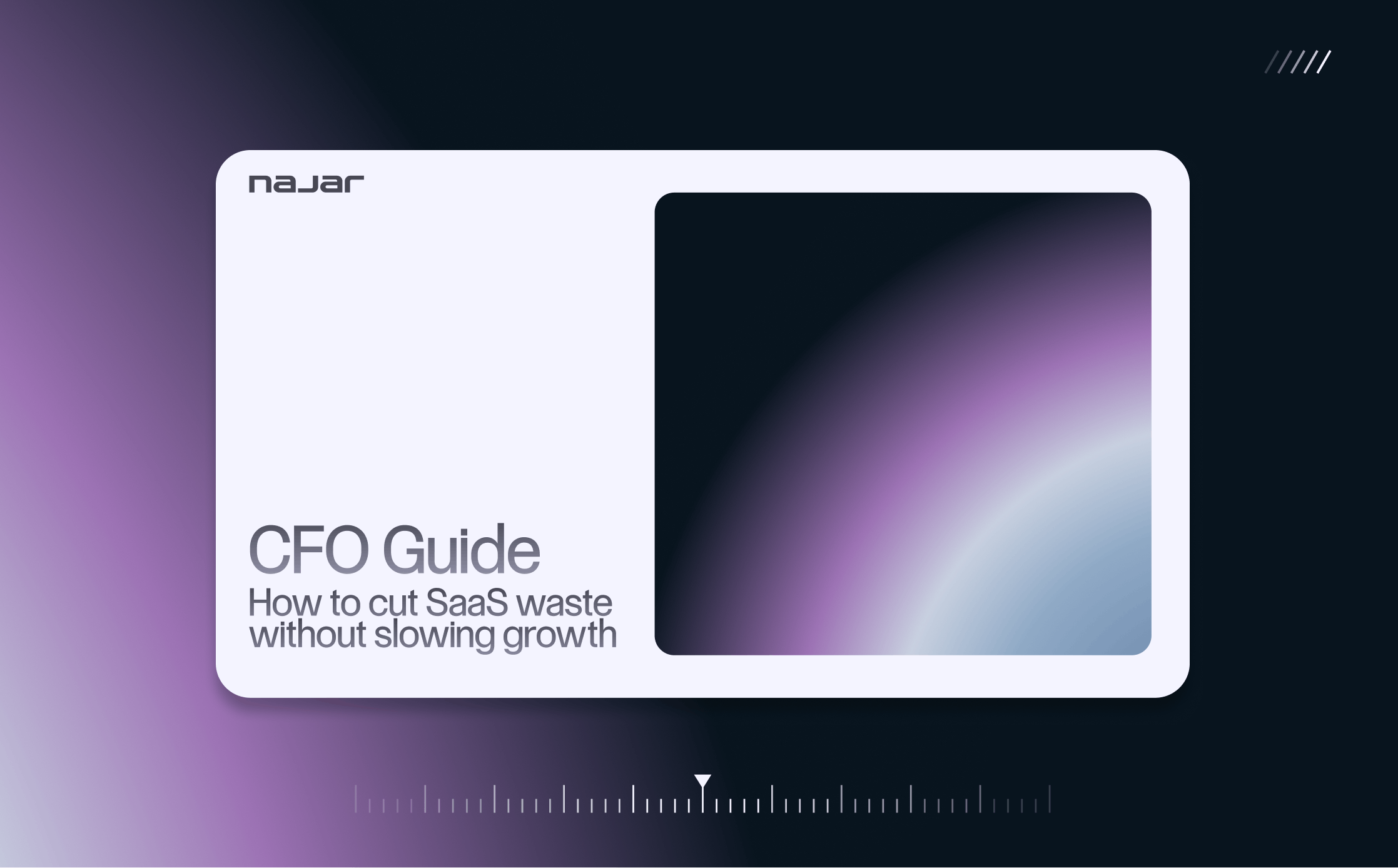How to define your SaaS needs?
SaaS tools are enjoying growing popularity in many sectors, not just tech. It has become essential for organizations to establish a stable, reliable strategy for selecting the most suitable solutions.
This selection can only be made on the basis of clearly defined, objective requirements. To achieve this, it's crucial to spend time defining your needs, through a scoping process. Here are some best practices for defining your SaaS requirements.
What are the benefits of scoping your SaaS needs?
Definition of scoping
Scoping, or defining requirements, is an essential step when it comes to SaaS. It's the process of defining the specific requirements and objectives that a SaaS tool must meet to satisfy your company's needs.
Scoping enables you to identify precisely the benefits you expect from your software. It then facilitates evaluation of the effectiveness and relevance of the SaaS tools available on the market.
Define your SaaS needs to avoid unnecessary costs
By clearly defining your SaaS requirements, you can avoid unnecessary costs for your company. It becomes much easier to identify superfluous functionalities in the software you use.
Subscriptions to SaaS tools are often modular, and their price rises with the number of features you choose. The right framework can help protect you from excessive or redundant subscriptions.
Ensuring efficient use of SaaS software
By setting up a rigorous framework, you can ensure that your tools are optimized. It ensures that your software meets the strategic and operational needs specific to your business.
By adopting a properly scoped approach, you also ensure the smooth integration of your SaaS solutions within your teams. This reduces the risk of under-utilization or resistance to change on the part of your team.
Business objectives and key requirements
Needs scoping enables you to highlight your company's priorities and requirements. You can then focus your efforts on these precise points and align them with your objectives.
By including the various stakeholders in this process, you make it possible to reach a consensus on the fundamental needs of the company and its teams. This makes the process smoother and avoids potential conflicts.
How to carry out a comprehensive SaaS needs assessment
Needs assessment: the guide
The scoping process for your SaaS solutions should start with an in-depth analysis of your business workflows, processes and pain points. In this way, you can identify inefficiencies or even gaps that could be resolved with your SaaS software.
Based on the needs you've identified with your stakeholders, you can compare the SaaS solutions available on the market. Take into account the functionalities offered, compatibility with your existing systems, costs and the reputation of suppliers.
By assessing your needs in advance, you'll be able to choose the SaaS tools best suited to your business. In this way, you can make clear improvements to the fluidity of your business processes.
Focus on: the importance of stakeholders
It's essential to involve stakeholders in your needs assessment process. These include, in particular, department heads and end-users. By including them in the scoping process, you can ensure that your choice of SaaS solutions is the right one.
These stakeholders have knowledge specific to their situation that can accurately guide your choice of software. Whether they are your teams or end-users, they each have specific issues that SaaS tools need to address.
By involving them, you guarantee smoother adoption and acceptance of your solutions by them. You also ensure that you're responding to real, well-targeted needs, and limit the risk of making the wrong choice.
How do you gather feedback from stakeholders?
There are a number of ways in which you can gather stakeholder feedback on your SaaS solutions. Individual interviews, surveys, focus groups and workshops are all suitable formats.
These approaches enable you to establish a free and open dialogue with your various stakeholders. In this way, you can gather their ideas, concerns and suggestions about the SaaS tools you use.
We recommend that you vary the formats in order to gather both quantitative and qualitative data. In this way, you'll have gathered a variety of perspectives representative of their points of view, and will be able to make informed choices for your software.
Define clear objectives and key performance indicators (KPIs)
Align your objectives with your company's strategy
It's essential to set clear objectives for your SaaS solutions. By highlighting expected results and desired performance, these objectives enable you to measure and evaluate the effectiveness of the SaaS tools you implement.
These objectives must be aligned with your organization's overall strategy. Make sure your objectives are clear, measurable and aligned with your business, so you can tailor your actions to maximize the benefits of your solutions.
KPIs to measure the effectiveness of SaaS solutions
Key performance indicators are a way of tracking and quantifying the results of your software. The tangible measurements they provide enable you to establish an objective view of the effect your solutions are having on your processes, results and objectives.
Thanks to your clear, quantifiable KPIs, you can quickly analyze their effectiveness and capacity to produce added value for your company. These indicators must be linked to the objectives you have set.
For example, increasing sales volume, reducing costs and improving customer satisfaction are clear objectives you can set to evaluate your SaaS solutions.
Associated KPIs for measuring progress towards each of these objectives could be sales conversion rate, cost per transaction and customer satisfaction rate.
Prioritize requirements and functionalities
By establishing a hierarchy between the most critical and significant requirements, you can prioritize the functionalities you expect from your SaaS solutions and allocate your resources according to the most crucial needs. In this way, you can optimize the operational efficiency of your solutions.
The MoSCoW method
To establish these priorities, you can use the MoSCoW method (Must-Have, Should-Have, Could-Have, Won't-Have). It allows you to classify features according to these categories (must-have, should-have, could-have, shouldn't-have).
It's an approach that facilitates decision-making, because it forces you to prioritize your requirements in a formal way. This ensures that your resources are allocated according to an objective classification.
Whichever method you choose, it's a good idea to focus on the core functionalities that directly address your most pressing business needs.
Assessing integration and scalability
It's crucial to consider how well the SaaS solutions you choose integrate with your company's existing systems and other tools. You need to guarantee the interoperability of all your software to avoid compatibility issues.
By choosing scalable solutions, you ensure that they can keep pace with the growth of your business. They will then adapt smoothly to future changes in your business, thanks to additional functionalities or a modulation of those already in place.
Assessing the scalability of SaaS solutions
To measure the scalability of the SaaS solutions you're considering, you can focus on factors such as adaptability to change, adding users, or handling a larger workload.
Your solutions must offer a scalable infrastructure. They must be able to handle growing demand without compromising performance.
By choosing modular, customizable SaaS software, you can adjust settings and workflows to your specific needs. This makes it easy to truly align the use of your software with your company's usual processes.
Budgeting and total cost of ownership (TCO)
It's vital to establish a realistic budget for implementing SaaS, and to take into account the ongoing costs involved. By doing so, you clearly anticipate not only the expenditure required to install your software, but also the recurring costs.
These include subscription costs, SaaS maintenance and upgrades. Certain expenses may also be added as your business grows, should you decide to use additional functionalities.
Other cost factors may also come into play. Training, support or even the potential expense of customizing your tools or integrating them with your systems are all elements to be taken into account.
Calculate total cost of ownership (TCO)
When calculating TCO (Total Cost of Ownership), make sure you take into account all the financial elements associated with the adoption of your SaaS solution.
TCO is made up of monthly or annual costs (subscription and fees related to the various features and service levels chosen). Then there are the implementation costs (data migration, initial configuration and user training).
Finally, add recurring costs (maintenance, technical support and updates). Also take into account the expected lifespan of your software, to evaluate your TCO over an appropriate period.
Need to optimize your SaaS expenses?
Our Najar experts can help you manage your SaaS software.
Take a look at our Savings Calculator to discover your optimization opportunities.
Conclusion
Properly scoping your SaaS needs is crucial to optimizing the return on investment and added value of your SaaS tools. By clearly defining your objectives and associated KPIs, you can quickly analyze the effectiveness of your solutions.
By looking at the total cost of ownership (TCO), you can establish a complete picture of the weight of your SaaS solutions in your budget and expenses. The more precise the scoping stage, the more comprehensive your SaaS needs will be.




